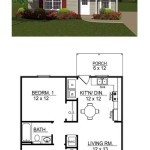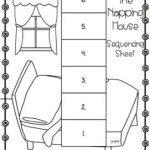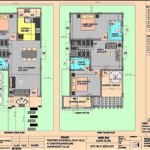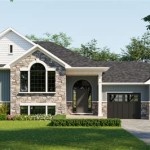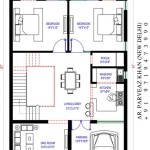1-Story Craftsman House Plans: A Comprehensive Guide
The Craftsman style, originating from the Arts and Crafts movement of the late 19th and early 20th centuries, embodies simplicity, functionality, and handcrafted details. Emphasizing natural materials and a connection to the outdoors, Craftsman homes offer a timeless appeal, often characterized by their low-pitched roofs, wide eaves, exposed rafter tails, and welcoming front porches. Single-story Craftsman house plans specifically cater to those seeking accessibility and ease of living, blending the aesthetic charm of the style with the practicality of a single-level layout. These plans are an excellent choice for diverse demographics, including retirees, young families, and individuals with mobility considerations.
This article delves into the key features, benefits, and considerations associated with selecting 1-story Craftsman house plans. It also explores various design elements and provides guidance on adapting these plans to suit individual needs and preferences.
Key Characteristics of 1-Story Craftsman Homes
Several distinctive features define the aesthetic and functional aspects of 1-story Craftsman homes. These characteristics contribute to the overall appeal and enduring popularity of this architectural style.
Low-Pitched Roofs and Wide Eaves: A hallmark of the Craftsman style, the low-pitched roof is designed for practicality and visual appeal. The gentle slope facilitates efficient water runoff while creating a sense of groundedness. Wide, overhanging eaves extend beyond the exterior walls, providing shade and protection from the elements. These eaves are often adorned with exposed rafter tails, showcasing the structural elements and adding a decorative touch.
Emphasis on Natural Materials: Craftsman homes prioritize the use of natural materials such as wood, stone, and brick. Wood siding, often in the form of clapboard or shingles, is a common exterior cladding choice. Stone or brick accents are frequently incorporated around the foundation, porch supports, or chimney, adding texture and visual interest. Interior elements, such as exposed beams, wood trim, and built-in cabinetry, further emphasize the natural materials palette.
Prominent Front Porches: The front porch is an integral part of the Craftsman home design, serving as a welcoming transition between the interior and exterior spaces. Typically covered, the porch provides a sheltered area for relaxation and social interaction. Substantial porch columns, often made of wood or stone, support the roof and contribute to the overall aesthetic. The porch often extends across a significant portion of the front of the house, creating a focal point and inviting curb appeal.
Open Floor Plans and Functional Layouts: While older Craftsman homes may feature more compartmentalized layouts, modern 1-story Craftsman plans often incorporate open floor plans that promote a sense of spaciousness and connectivity. Living areas, dining areas, and kitchens are often seamlessly integrated, creating a central hub for family activities. Functional layouts prioritize efficiency and accessibility, with well-defined circulation paths and strategically placed rooms.
Abundant Natural Light: Large windows and strategically placed skylights are incorporated to maximize natural light penetration. Windows are often multi-paned or feature decorative grilles, adding to the architectural detail. The abundance of natural light contributes to a bright and airy interior environment, enhancing the overall comfort and livability of the home.
Built-In Features: Craftsman homes often include built-in features such as bookshelves, cabinets, and seating areas. These built-ins not only provide storage and functionality but also contribute to the handcrafted aesthetic and a sense of permanence. They are typically constructed from high-quality wood and finished with meticulous attention to detail.
Benefits of Choosing a 1-Story Craftsman House Plan
Opting for a 1-story Craftsman house plan offers several advantages, catering to various lifestyle needs and preferences. These benefits extend beyond aesthetics, encompassing practicality, accessibility, and long-term value.
Accessibility and Universal Design: A primary benefit of a single-story home is its inherent accessibility. Eliminating stairs makes the home suitable for individuals with mobility limitations, including seniors and those with disabilities. Universal design principles can be easily incorporated into the plan, such as wider doorways, grab bars in bathrooms, and roll-in showers, ensuring comfortable and safe living for all occupants.
Ease of Maintenance: Without the need to climb stairs for cleaning, repairs, or maintenance tasks, a single-story home offers significant convenience. Exterior maintenance, such as roof repairs and gutter cleaning, is also simplified. The reduced vertical expanse translates to lower heating and cooling costs, as there is less surface area exposed to the elements.
Enhanced Safety: The absence of stairs minimizes the risk of falls, particularly for young children and elderly individuals. In the event of an emergency, such as a fire, a single-story home provides easier and faster egress, enhancing safety for all occupants.
Open and Connected Living Spaces: As discussed previously, contemporary 1-story Craftsman plans often feature open floor plans that promote a sense of spaciousness and connectivity. This design encourages interaction and facilitates seamless movement between living areas, making it ideal for families and those who enjoy entertaining.
Strong Resale Value: The Craftsman style enjoys enduring popularity, and single-story homes are in high demand, particularly among retirees and families seeking accessibility. These factors contribute to the strong resale value of 1-story Craftsman homes. The timeless design and quality construction ensure that the home retains its appeal over time.
Flexibility in Design and Customization: While Craftsman homes adhere to specific architectural principles, there is ample opportunity for customization to suit individual needs and preferences. Floor plans can be modified to accommodate varying family sizes and lifestyles. Exterior finishes and interior details can be selected to reflect personal taste.
Considerations When Selecting a 1-Story Craftsman Plan
While 1-story Craftsman house plans offer numerous benefits, it's important to consider certain factors before making a selection. These considerations relate to lot size, privacy, and potential trade-offs associated with single-level living.
Lot Size and Configuration: Single-story homes typically require a larger footprint than multi-story homes of comparable square footage. Therefore, it's essential to ensure that the lot size is adequate to accommodate the desired plan. The lot configuration, including width and depth, should also be considered to ensure that the home fits comfortably within the property boundaries and meets setback requirements.
Privacy Considerations: In a single-story home, all living spaces are located on the ground level, which may raise privacy concerns, particularly in densely populated areas. Strategic landscaping, such as trees and shrubs, can help to create a visual barrier and enhance privacy. Window placement and orientation can also be optimized to minimize visibility from neighboring properties.
Potential for Limited Views: Unlike multi-story homes that may offer panoramic views, single-story homes typically have limited views due to their lower elevation. This may be a factor to consider for individuals who value expansive vistas. However, careful site planning and landscaping can help to maximize views from within the home.
Cost Considerations: The cost of building a 1-story home may be slightly higher per square foot compared to a multi-story home due to the larger foundation and roof area. However, this difference may be offset by lower construction costs associated with simplified framing and easier access for tradespeople.
Accessibility to Different Areas: A single-story layout inherently means that every room, from the bedrooms to the living areas, is easily accessible from any other point in the house. This can be a particular advantage for families with young children or elderly relatives, allowing for greater ease of supervision and movement.
Room for Expansion: While the initial plan is a single story, consideration can be given to future expansion possibilities. Some plans allow for the addition of an attic space that could be finished later, or the possibility of extending the home horizontally if the lot allows. Planning for these possibilities from the outset can simplify the process down the line.
In conclusion, 1-story Craftsman house plans offer a harmonious blend of style, functionality, and accessibility. By carefully considering the key characteristics, benefits, and potential considerations outlined in this article, prospective homeowners can make an informed decision and select a plan that perfectly suits their needs and preferences. The enduring appeal of the Craftsman style, coupled with the practicality of a single-level layout, makes these plans an excellent choice for those seeking a comfortable, stylish, and accessible home.

One Story Craftsman Home Plan 14566rk Architectural Designs House Plans
:max_bytes(150000):strip_icc()/SL-1444_FCR-6feba1b011944212b854a6aabde38158.jpg?strip=all)
These One Story Craftsman House Plans Are Full Of Southern Charm

1 Story Craftsman House Plan Marietta Bungalow Plans Courtyard

Craftsman Style House Plans Big And Small Houseplans Blog Com

Three Bedroom One Story Craftsman Plans

Single Story Craftsman Home Plans Blog Eplans Com

4 Bedroom 1 Story Modern Farmhouse Style Plan With Outdoor Living Area And Bonus Room Westchester Craftsman House Plans

Craftsman House Plans Style Home The Designers

1 Story Craftsman House Plan Foxborough Retirement Plans

1 Story Modern Cottage Style House Plan Spaulding Craftsman Plans Farmhouse


